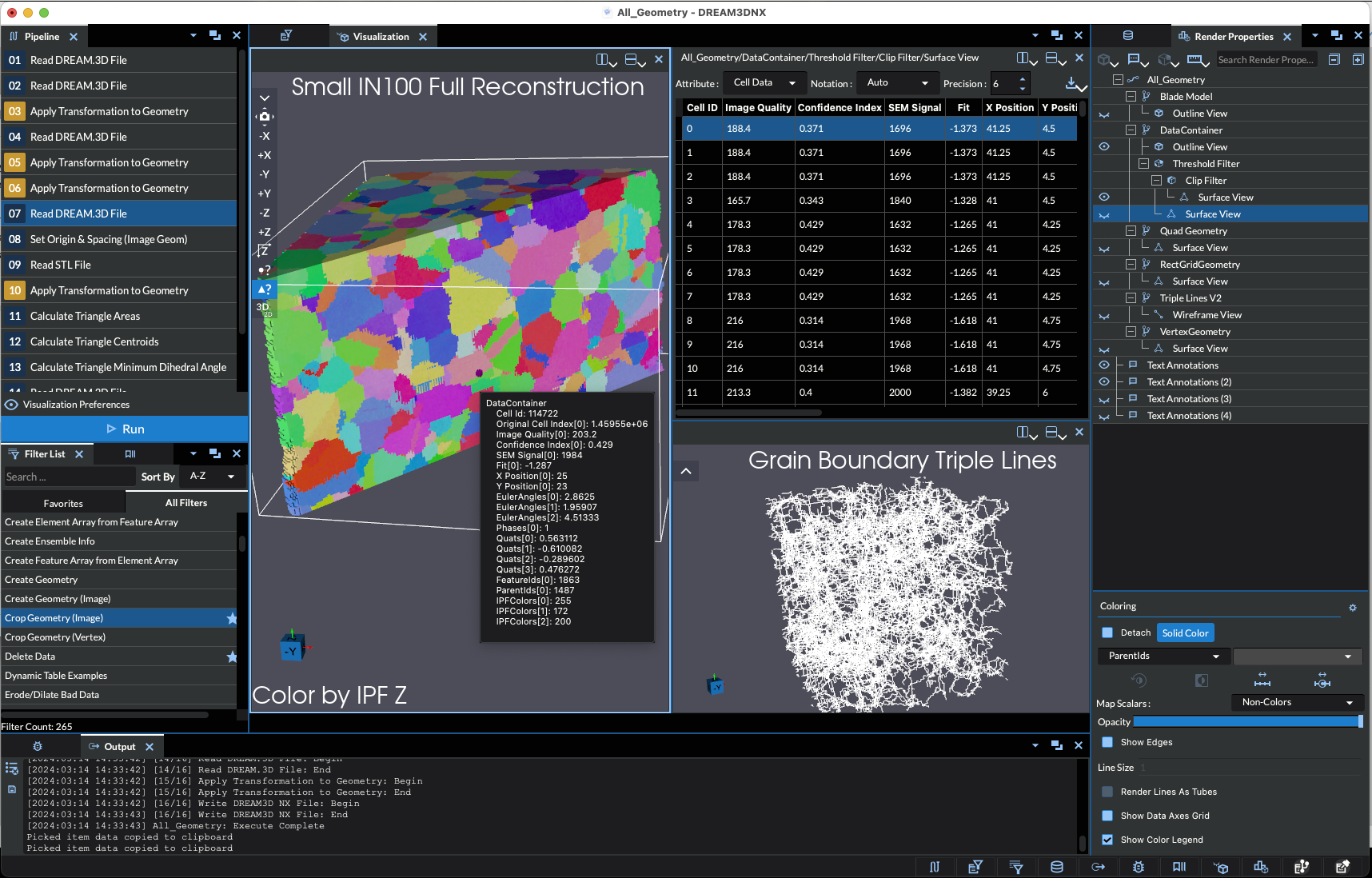
DREAM3D-NX Version 7.2.0

Figure 1 DREAM3D-NX with visualization
Capabilities
DREAM3D-NX has almost 250 individual filters that can import, process or export multidimensional data. The filters can be divided into three main groups.
Data Import
This group allows the user to read various data files into the running instance of DREAM3D-NX. There are approximately 15 different kinds of files that can be imported.
EBSD Data from EDAX (.ang and .h5), Oxford Instruments (.ctf) and BrukerNano (.ctf and .h5)
Image Files as either single or 3D stacks (TIF, BMP, JPEG, PNG, MHA)
CT data files [North Star Imagings (.nsihdr/.nsidat) Volume Graphics (.vgi/.vol)]
Generic HDF5 files
Binary files
ASCII formatted text files
CSV formatted text files
STL triangle mesh files
Data Export
HDF5 (.dream3d file) Compatibility with ParaView to visualize raw and processed data through an XDMF file.
Binary Files
ASCII Files
STL files
Abaqus File
Image Files as either single or 3D stacks (TIF, BMP, JPEG, PNG, MHA)
Avizo files
VTK legacy files (Rectilinear Grids only)
Data Processing
Slice to Slice Image Alignment
Cleaning/Processing to remove/mask unwanted data
Segmentation: Mark areas that represent the features of your microstructure
Size and shape Analysis of segmented features
Architecture
The above items represent only a subset of the specific capabilities of DREAM3D-NX. In general, DREAM3D-NX can be considered a generic tool for processing multidimensional, multimodal data. The main DREAM3D-NX web site has more information on the project, in addition to official binary distributions and example data files. DREAM3D-NX is built with a Plugin system that allows other institutions to build additional Filters using their own programming resources and intellectual property. simplnx is a rewrite of the SIMPL library upon which the original DREAM.3D is written. This library aims to be fully C++17 compliant, removes the need for Qt at the library level and brings more flexible data organization and grouping options. The library is under active development by BlueQuartz Software at the current time.